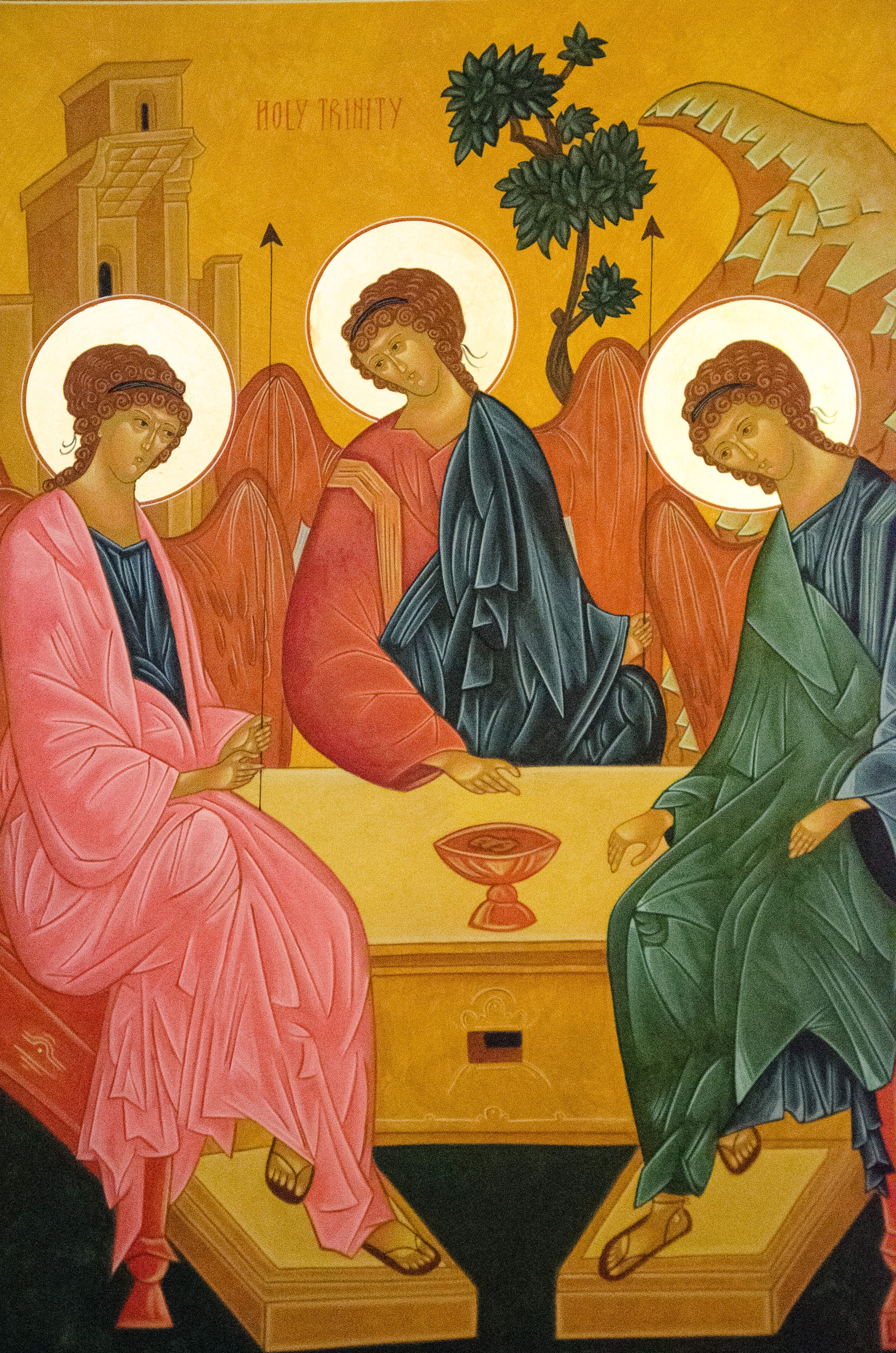I rarely remember exact dates in my life, with a few of exceptions: June 16, 1992, when I attended Pope John Paul II’s private morning mass and was blessed personally by him afterwards; June 18, 1987, when a two-hour and 45-minute rapid labor gave birth to my wonderful son, Michael; and December 8, 1999, when I spent the day meditating on Mary’s Immaculate Conception.
The first two events might seem reasonable to stick in anyone’s mind, but spending a day meditating on the Immaculate Conception – why would that be so significant as to be ranked among being blessed by a pope and the birth of my son? Because that day launched me on a life-long quest that has influenced everything you’ve read in this blog – the meaning of virginity.
On that day, I was praying before the tabernacle, begging the Lord to show me deeper insights into the significance of the Immaculate Conception and its meaning. Eventually, the Spirit directed my thoughts toward Mary’s virginity, prompting me to ask myself, “What is virginity?”
As we noted in last week’s blog, our contemporary culture interprets virginity as the state of someone who hasn’t had sex. But I was searching for a way to speak to teens about virginity and chastity that would shake them up, puncture their smug resistance, and motivate their choices even amidst incredibly tempting situations. So, I doggedly kept asking myself, “What is virginity?”
The answer came slowly over the next month: A virgin is ready and able to give him or herself completely to a future spouse. A virgin’s emotional and physical integrity remains available and intact. A virgin’s potential for bonding hasn’t been squandered.
I was on the right path, but not yet at its terminus. My definition of virginity was gradually developing from a purely physical definition to one that engaged the whole person. I even began considering how one’s spirit could be virginal even if his or her body wasn’t.
Then I received a new piece of information. Venerable Conchita, a married, lay woman from Mexico, described God the Father in her writings as Virgin Father. Whoa! That took me aback. How could God be Virgin and Father? We speak about Mary as virgin and mother because she never engaged in sexual relations, but what about God the Father? Obviously, the sexual definition didn’t apply to God. There must be something more.
And, indeed, there was. One week into the Great Jubilee of the Year 2000, I was driving from New York to Ohio with eight hours in the car and nothing to do except ponder this question of Virgin Father. Somehow virginity in God expresses an essential attribute of the Divine Nature, but what is it? With a smile I thought: “Thank goodness the Second Person of the Blessed Trinity is a Son and not a Daughter, otherwise there would be endless speculation about reproductive offspring between the Divine Father and Daughter and we would no longer have a Virgin Father.”
But wait! The relationship between the Father and the Son does indeed refer to generation. In the Creed we profess Jesus as eternally begotten of the Father: “God from God, Light from Light, true God from true God, begotten, not made…” God is Father precisely because He begets the Son. The Father’s begetting of the Son, however, is not a matter of sexual reproduction. It expresses an essential element of the Divine Nature: it is a virginal begetting.
As the hills of Pennsylvania flew by, my mind continued pondering Divine Virginity. Since God is Pure Spirit that means Divine Virginity is not a corporeal state, a state of the body that can be lost. It is a Divine quality that is infinite and undiminishable. It is infinite because Divine Virginity has no beginning and no end. And it is undiminishable because Divine Virginity never decreases or diminishes.
And then it hit me: Virginity in the Trinity is the power (capacity) for infinite and undiminishable union.
Thus, no matter how much the Virgin Father gives Himself and His divinity “away” to beget the Son, the Father’s Divinity and His union with the Son is always infinite and undiminishable. And no matter how much the Son receives the Father’s total gift of self and responds with His own Virginal Self-Giving, the Son’s Divinity and union with the Father is also infinite and undiminishable. And their total self-giving and receiving is fruitful – it bursts forth eternally as the Holy Spirit.
The Holy Spirit, the Virgin Spirit, is the Divine Person who reveals that the union between the Father and Son is virginal and fruitful. He is the virginal bond of love that unites them. In the Trinity, therefore, virginity, union, and fruitfulness are inseparable – virginity never exists apart from union and union never exists without fruitfulness. To me that’s incredibly awesome. Virginity, union, and fruitfulness are inseparable in the Trinity. Right on the turnpike, I was experiencing my own Star Trek moment!
The rain on my windshield providentially brought my thoughts out of the stratosphere and back down to earth. How does all this apply to us as human persons? Even though we are made in the image and likeness of a Trinitarian God, we are certainly not infinite and undiminishable. How, then, does Divine Virginity apply to our human nature? The answer was deceptively simple: we are created to be totally available for union.
Divine Virginity when translated into time, space, and human embodiment as male or female becomes the capacity for being totally available for union. Or, to link this with our reflections from last week on receptivity, virginity is the potential in our human nature for perfect union through perfect receptivity.
As Catholics, we instinctively understand this language of virginity, union, and fruitfulness through the Blessed Virgin Mary. One of my dear friends grasped this truth after reading last week’s blog, even though I hadn’t yet mentioned Mary. In the comments section, she wrote: “How does the Blessed Virgin Mary’s body illuminate these deep thoughts? And another question… can we say our body’s virginal capacity for union will also be a virginal capacity for spiritual fruitfulness?”
Fiat! Yes! In Mary, God prepared the most perfect “visual aid” to teach us the profound truth of our own human virginity. We call her “Virgin Mary” not only because she never engaged in sexual relations, but even more fundamentally because she was totally available for union. Through the gift of her Immaculate Conception, Mary was free from the effects of original sin; she was preserved from any defect within human nature that would impede her capacity for being “totally available for union” with God, neighbor, the natural world, and within her very being.
Mary embodies the perfect human expression of virginity, union, and fruitfulness. At the Annunciation, the Holy (Virgin) Spirit overshadowed Mary, drawing her into perfect union with Himself, actualizing her virginal capacity to be totally available for union by receiving the power of the Virgin Spirit into her body. And from that virginal union, a divine-human fruitfulness burst forth – she conceived the Son of God and bore Christ to the world without loss of her virginity. Her holy union and communion with the Divine was fruitful and virginal at the same time.
No wonder St. Maximillian Kolbe described the Holy Spirit as the Uncreated Immaculate Conception! In the Trinity, the Holy Spirit is uncreated union, virginity, and fruitfulness while on earth Mary is created union, virginity, and fruitfulness. Her Immaculate Conception re-gifted Mary with our natural virginal birthright. This regifting, when activated by the indwelling of the Holy Spirit, made intimate, spousal union with God possible that burst forth in fruitfulness.
Put another way, original sin stole our virginity. It corrupted the virginal capacity of our human nature to be totally available for union. Since the Fall, it’s no longer self-evident that we are created to receive God into our bodies and actualize this virginal bond of spousal love with the Trinity so as to bear abundant spiritual fruit (cf. John 15).
But with Jesus Christ and the Incarnation, everything changes. Redemption in Christ restores our virginity. It restores our virginal birthright by being re-gifted, born again of the Spirit. Isn’t this precisely what Jesus told Nicodemus in John 3, “You must be born anew”? Yet, Nicodemus was confused and asked, “How can a man enter a second time into his mother’s womb and be born?” Jesus corrected him by saying, “You must be born of water and the Spirit.” Just as in the Trinity, being begotten is not a matter of sexual reproduction but of virginal union, so, too, our spiritual rebirth flows from a virginal union with the Spirit. We are reborn of the Spirit in a virginal re-birth.
But how does this rebirth in the Spirit come about for us here on earth? How are we re-gifted with our virginal birthright? The Gospel of John answers this question when describing Jesus’ death: “Then he bowed his head and delivered over [gave up] his spirit” (John 19:30).
Jesus’ total and complete self-gift on the cross is a lifting of the veil to see His total and complete self-gift from all eternity to the Father. And the fruit of that self-gift on the cross on earth is the same as in heaven – the Holy Spirit, who is the Person-Gift of union, virginity, and fruitfulness, is breathed back into our human nature.
How then is the Gift of the Virgin-Spirit communicated to us? Through the Sacraments. The Catechism of the Catholic Church announces this truth unambiguously: “Sacraments…are actions of the Holy Spirit at work in his Body, the Church” (CCC No. 1116). Thus, every sacrament is meant to be a fruitful outpouring of the Holy Spirit, a restoration and strengthening of the virginal life of union with God that was ours before original sin.
The sacrament of Baptism initiates this “re-virginization” in a pre-eminent manner. Baptism plunges us into water to symbolize the washing away of sin and rebirth in the Holy Spirit (CCC 1262). With our virginal rebirth, our capacity for union and fruitfulness with the Trinity through the Holy Spirit is renewed and re-initiated. We are re-gifted with what St. JPII calls our “original virginal value” (see TOB A10:2). Thus, our baptismal vocation can be understood within the framework of growth in virginity: we are called to protect our virginity from the ravages of sin while, at the same time, expanding and increasing our virginity by becoming more and more totally available for union and spiritual fruitfulness until this capacity is perfected in heaven.
Graciously, Trinitarian Love has already gifted us with a supernatural means for growth in virginity in this life through the Eucharist. The Eucharist is the pre-eminent experience of the virginal value of our body during this earthly pilgrimage. As we abide in virginal, one-flesh union and Holy Communion with the virginal, glorified Body of Christ, the fruits of Christ’s Pascal Mystery are communicated to us. For those precious moments, virginity, union, and fruitfulness are inseparable in our deepest being.
This week and throughout Lent, I encourage you to consider three simple courses of action:
- Practice being “totally available for union” with others by giving them your undivided attention and by physically turning toward them and intentionally “receiving them” when engaged in conversation.
- Ask the Holy Spirit to show you what choices and patterns in your life compromise your virginity. In other words, ask for spiritual insight into the aspects of your personality and habits that interfere with or diminish your total self-giving and receiving of God and others.
- Enter into a loving communion with the Virgin Mary and ask her to help heal areas where your virginity has been wounded or compromised. Many saints, including St. John Paul II, experienced total entrustment to Mary as a profound means of receiving Jesus and Trinitarian Love fully into their lives.
As you ponder, heal, and become more totally available for union, remember you…are a virginal gift!
© Katrina J. Zeno, MTS




